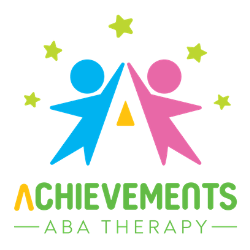Social Skills Hidden Rules of Conversation For Children with Autism:

Here is a short guide to teaching social skills to a child with Autism, in particular the hidden social rules of conversation.
Teaching Social Skills in Autism: Greetings
Start by explaining to your child that when you see someone that you know during the day it is polite to say “hello” or some other form of greeting.
Below is a clear breakdown of the “hidden rules” of greeting.
- The first time that you see someone that you know In the morning, it is polite to say “good morning.” But, be sure to make sure we don’t say “good morning” in the evening.
- When you pass someone in the hallway or yard, it is polite to say “hi!”
- When someone is leaving for the day it is polite to say “goodbye” “have a great day” or see you tomorrow. “
To work on this skill practice role-playing with your child. Another idea is to write up a list of different greetings and practice them in the natural environment.
Building Social Skills: Conversations Made Easy
There are many ways to start a conversation. Explain to your child that a good idea is to discuss something that is happening in the present moment or something that happened earlier in the day or the previous day.
Below is a clear step by step guide for a child with Autism to maintain a conversation.
- Start with a greeting.
- Ask a question about what your listener is doing or what he did.
- What are you playing?
- What are you eating?
- How was school today?
- What did you do over the weekend?
- Ask follow-up questions using WH Questions.
- “who did you play with?”
- “Where did you buy that ball?”
- “When did you go to the beach?”
A good way to teach this is to use conversation-building cards. That is to say, Engage with your client in a back and forth to build a conversation.
Another good idea is to use building blocks for for a visual to show your child how they are building a conversation.
Consequently, use a different color block for each speaker.
An Important Social Skill in Autism- Don’t Be a Space Invader!
One of the hidden social rules of conversation to teach your child is to sit or stand at an appropriate distance from their listener. Therefore, explain to your child that when we sit or stand too close to our listener we call this “invading their space.”
A good rule of thumb is to teach your child to stand arm’s length away.
Learn more about space invaders from Michelle Garcia Winner on her Social Thinking Website. Click here for a great handout that teaches this skill.
Listening: Improving Social Skills for children with Autism
When someone else is talking we use our mind and body to be a good listeners.
Here are three rules to keep in mind when being a good listener.
- Make eye contact
- Stay still. Make sure we have quiet hands and feet.
- Quiet Mouth. We are careful not to speak when other people are speaking.
- Wait for a pause in the conversation before saying something. A pause is when others stop talking.
- Ask a question about what the speaker is saying. This shows the speaker that you are interested in what they have to say.
Make a social story to teach this to your clients.
Social Skill: Teaching Children with Autism to Handle Interruptions
The general rule for conversation is to keep a quiet mouth when someone else is speaking. Sometimes it is ok to interrupt the speaker.
When is this okay?
- Help is needed.
- There is an emergency. For example, someone is hurt.
- You want something.
What is the right way to interrupt?
- Read the Room. Make sure it is an appropriate time to interrupt. If there is a group of people listening to a speech it would not be appropriate to interrupt the speaker unless there is a real emergency such as a fire. If there is a two-person conversation, it may be appropriate to interrupt when you need information or guidance. Use your social thinking skills to make this decision.
- Walk up to the speaker and wait for a pause in their conversation or activity.
- Say “excuse me..” and ask for what you need or want.
- Wait for their response. Do not ask it twice. Wait for them to reply.
- Say “thank you” before leaving.
Try teaching this skill using video modeling with your client.
Social Skill: Teaching a child with Autism how we end a conversation.
There are many ways to end a conversation. First, explain to the child why would you want to end a conversation?
- Firstly, You are bored
- Another reason can be since it is time for you to leave.
- You to do something else
- You want to talk to someone else
Then
- Think: “Do I want to end this conversation? “
- Wait until you have asked at least one question and the person has already answered it.
- Say, “it was nice talking with you, but I have other things that I have to do right now. I’ll see you later. “
Teaching a child with autism how to know it is time to stop to talking?
- Look for signs that your listener is interested in what you are talking about. That is to say, make sure that they are actively engaged in a back and forth discussion.
- In addition, If the listener does not look interested or looks bored, ask “do you want to hear more then it is time to finish the conversation.
- It the listener does not want to hear more then a. stop talking b. ask “what do you want to talk more about now?”
A lot of information on the article above is based on the teachings of Dr. Jed Baker PH.D and Michelle Garcia Winner.



















